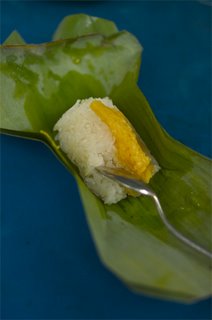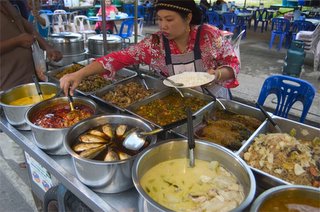Last month I happened to be in southern Thailand taking photos for a guidebook. I'm also in the early stages of collecting info and photos for a book on southern Thai food, so I made a point of taking lots of food pics. Thought I'd share some of those here as the food in southern Thailand is quite interesting and quite different than that of other parts of the country.
These wacky green pods below are known in Thai as sator. I've heard them called "stinky bean" in English. They are an essential element of southern Thai cooking and are probably the most recognizeable ingredient associated with this part of the country. Open them up and you'll get a bunch of lima bean-like pods. They can be eaten raw with nam phrik (chili paste), or fried, and have a very pungent odor. One fun side affect of eating sator is that the next day your urine will smell very strongly of sator. For more on the captivating but neglected topic of urine and food please visit noodlepie.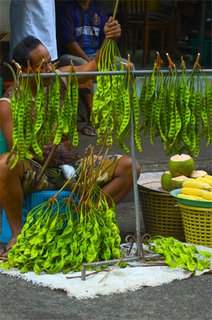
Another important ingredient in southern Thai food is khamin, turmeric, seen here below. It is this stuff that makes so many of the curries in southern Thailand yellow and orange. It is also used with seafood dishes to counter the undesireable "fishy" smell they sometimes have. And it's also used in soaps and lotions and is thought to lighten the skin.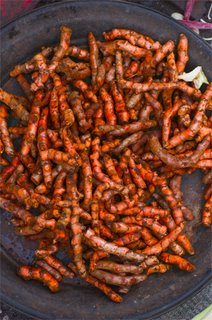
Below is khanom jeen, fermented rice noodles, with naam yaa pak tai, a southern-style coconut curry with pureed fish. Sounds nasty but is excellent, and really freaking spicy. When you order this dish you also get a tray of fresh "cooling" vegetables to counter the spiciness, including cucumber, bai bua bok (pennywort) and young cashew tree leaves.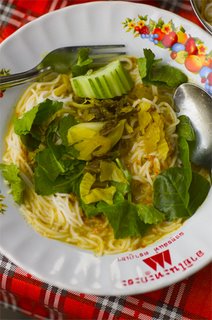
The pics below are all of raan khaao kaeng, southern-style curry shops. You order a curry or two, served over rice, and are also given a small bowl of a very spicy chili paste called nam phrik and a tray of fresh veggies.
The two curry shops below are in Satun, a province in the deep south of Thailand. The people here are predominately Muslim, and their food is halaal, meaning it follows Muslim dietary rules and doesn't have pork or alcohol or blood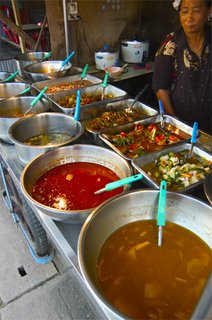
Fried chicken is also a big deal in the south and is usually made by Muslims as well. The women making this were using their bare hands to dip the chicken into the boiling oil, although I think they were doing it just to show off. Fried chicken vendors can be like that sometimes.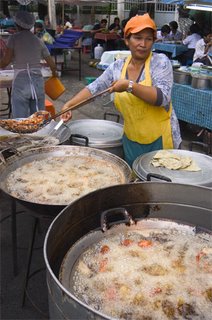
Because of the long coastline, seafood is an important staple of the people of southern Thailand, regardless of religion. The pic directly below was taken at the tiny market in Satun, and the grilled squid pic was taken in Nakhorn Sri Thammarat, a great city for food.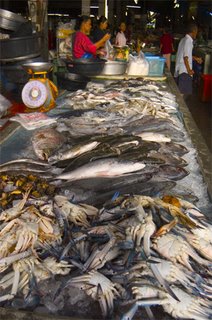
And for dessert, sweet sticky rice with sangkhayaa, a type of egg custard. This stuff is available all over Thailand, but is an essential dish at the numerous Chinese-style raan kopii, or coffee shops in southern Thailand.